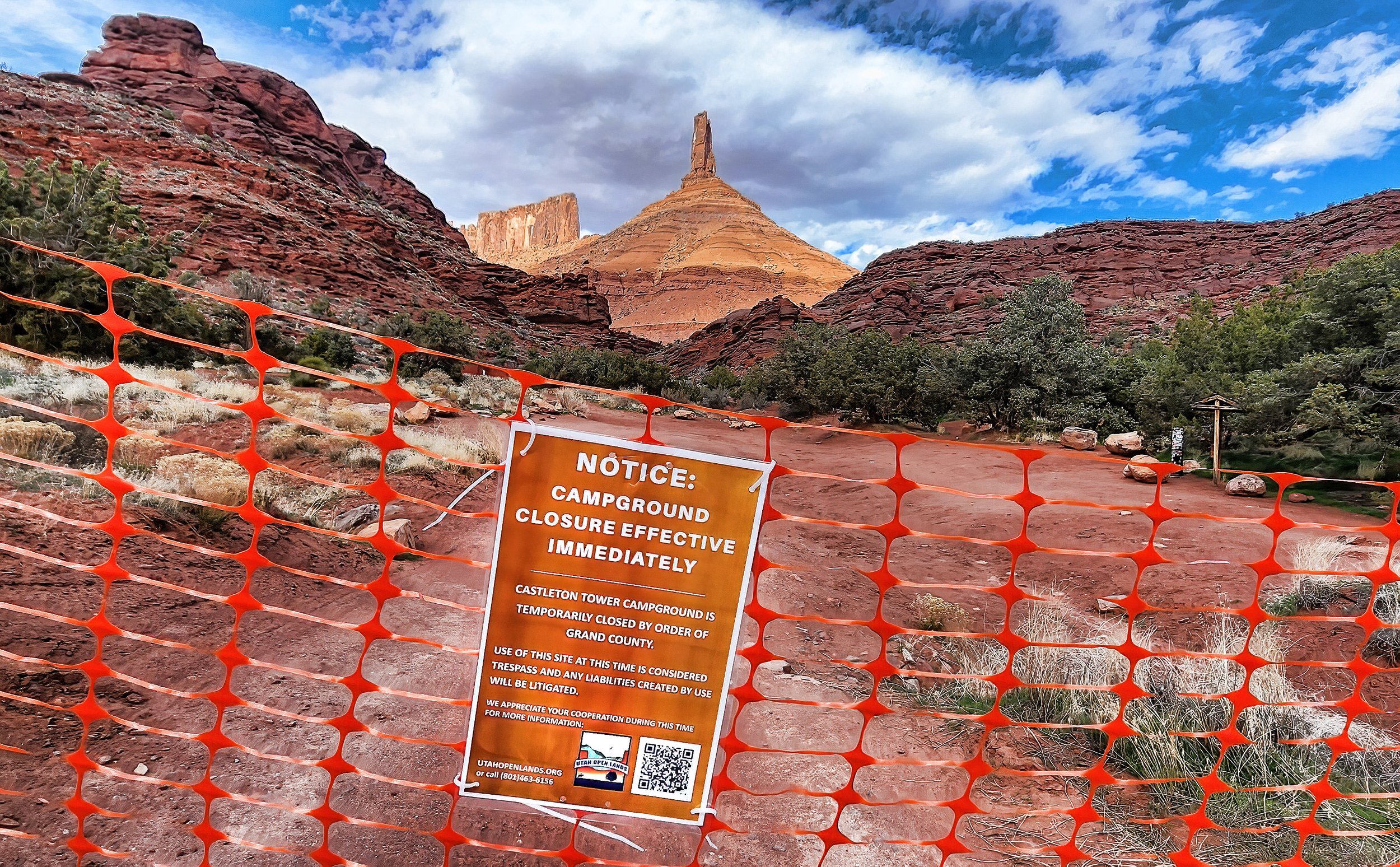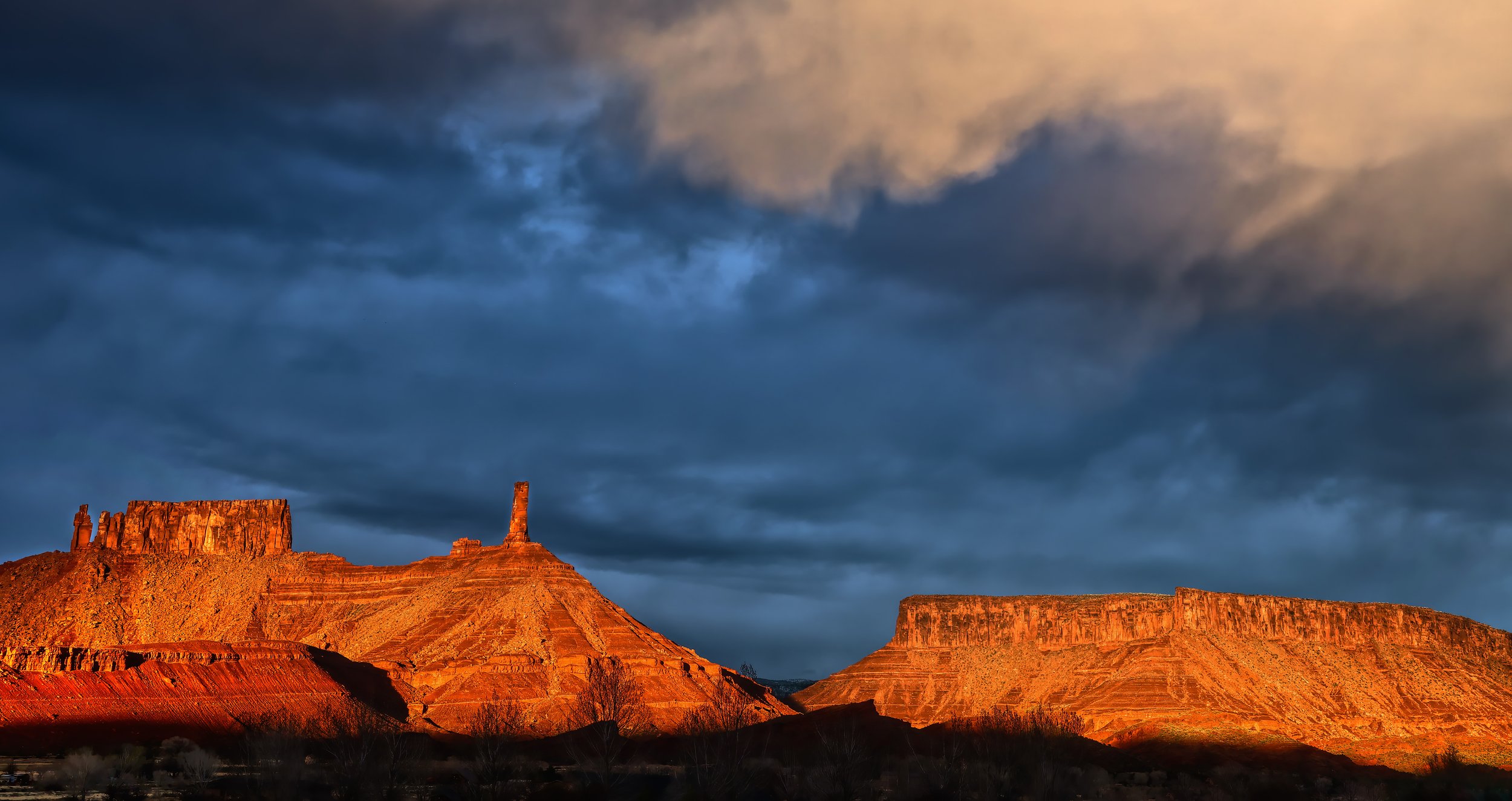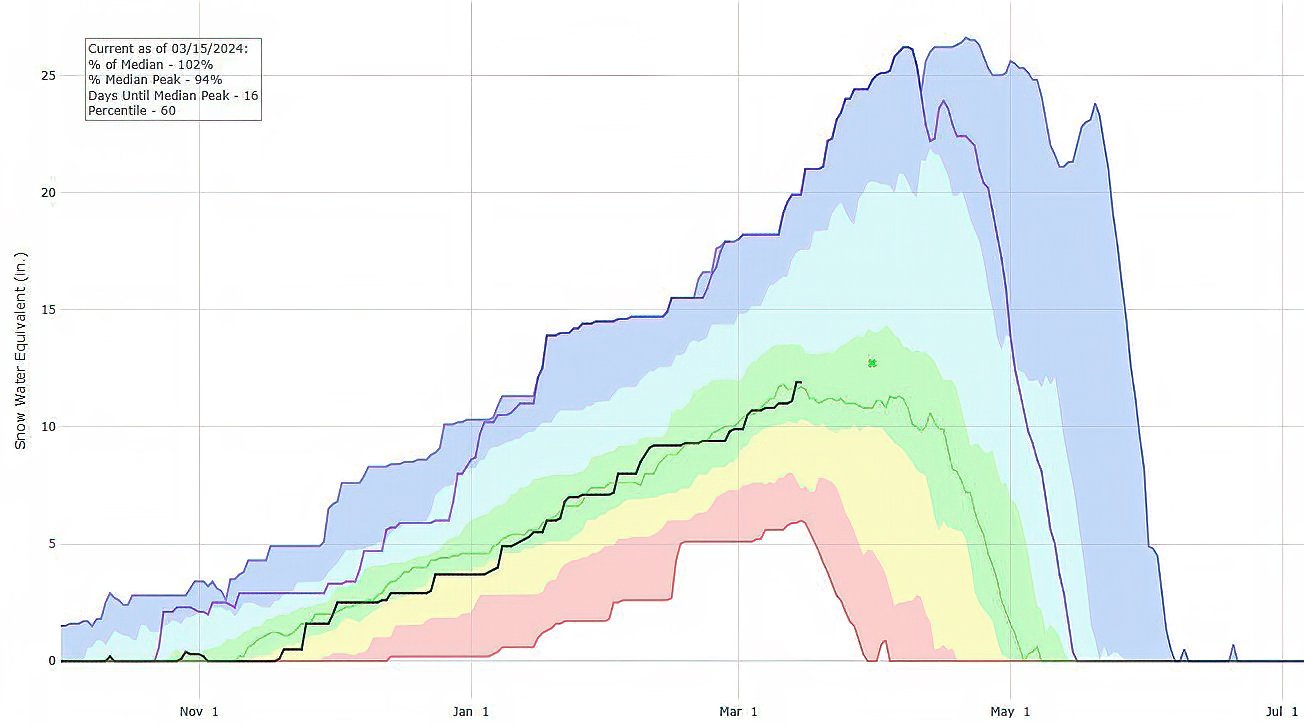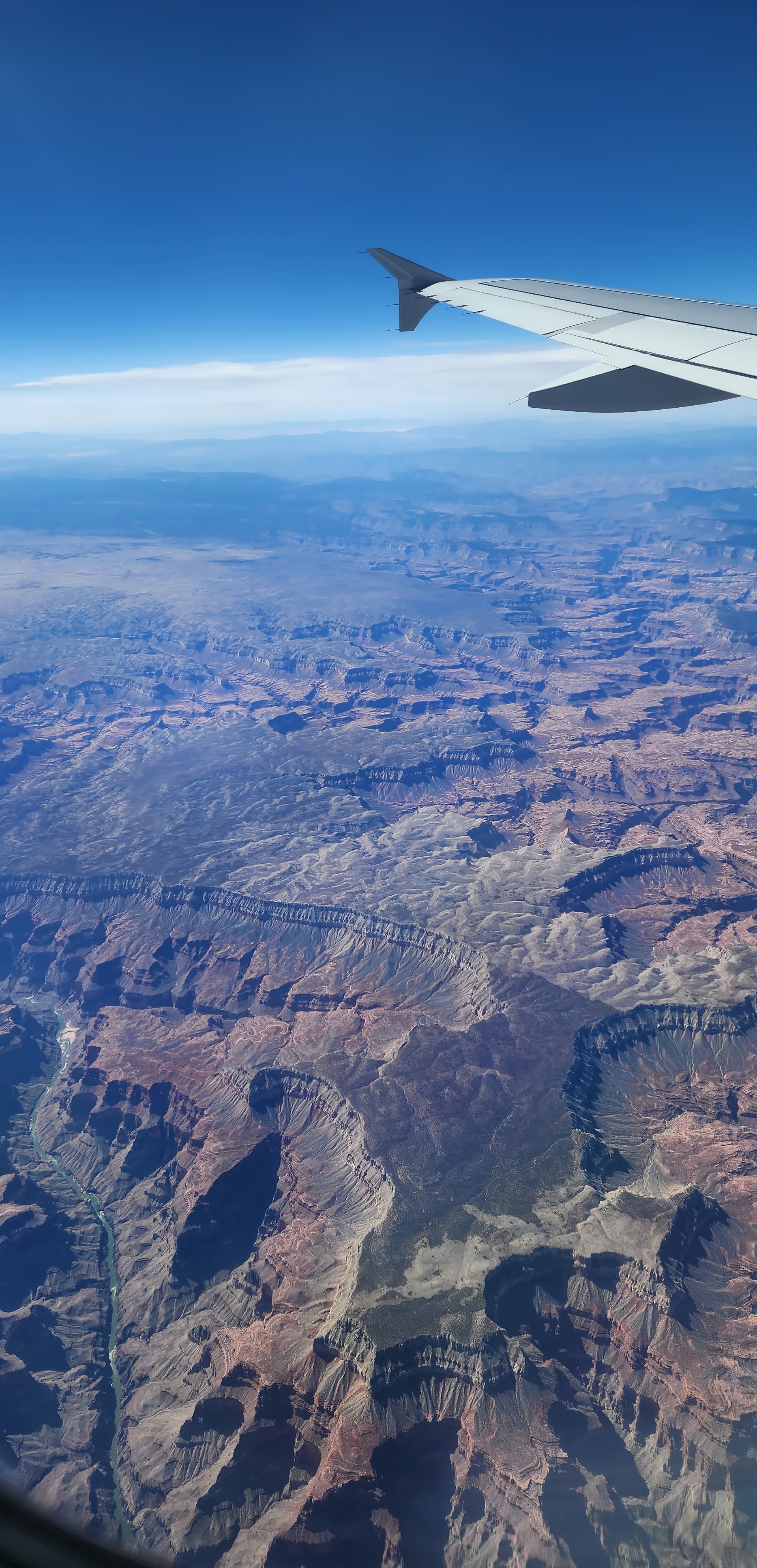as captured from Castle Valley, Utah. Peak eclipse occurs here at 12:32 pm MDT and the Sun’s orb will only be 58% obscured by the Moon.
Pre-eclipse Sun with several sunspots snapped at around 8:00 am MDT.
The big bite at the peak of the event for observers in southeast Utah. The Moon swallowed the sunspots.
The skies remained clear and an ice halo developed, and it got significantly chillier during the peak eclipse, seen here in a wide view.
The next total solar eclipse to transit North America will track through central Utah on 12 August 2045. Stay tuned.




































